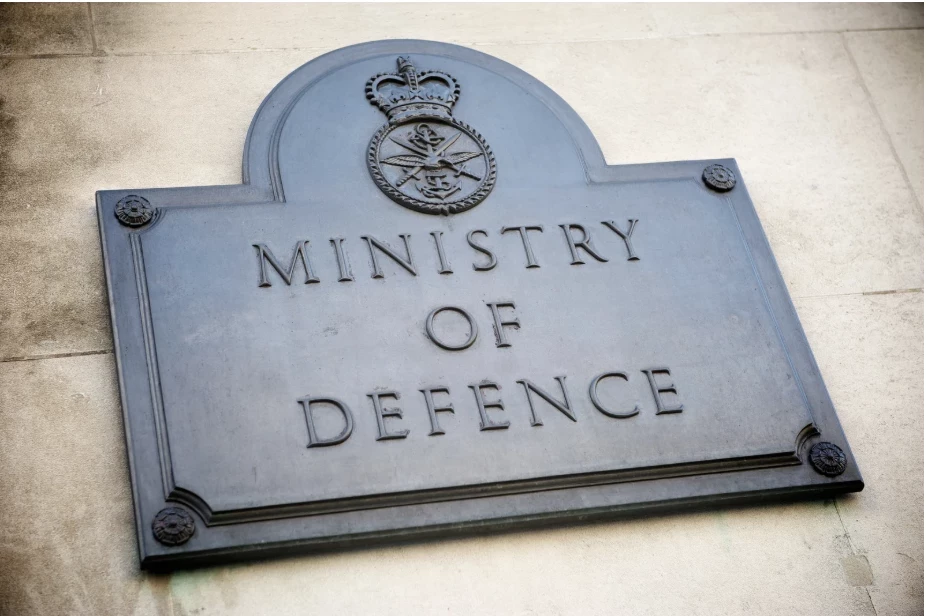The ideal radar combination for future air threats
In part 2 of our interview with ERA, Defence IQ talked to Commercial Director Ondřej Chlost to discuss the best defence against tomorrows air threats
Add bookmarkHow will drones affect air defence efforts?
For part one of the interview with ERA, click here
Defence IQ: As fair as air defence is concerned, how will UAVs and UCAVs affect the battlefield? They’re already becoming more important as they are smaller than manned aircraft and usually come equipped with AI and full autonomy.
CHLOST: Good question. This is a challenge as UAVs often use telemetry-signals for controls, so we extend the processing to include the five types of continuous signals, to allow the system to look for CW telemetry-signals.
"These targets [UAVs] are very hard to locate by radar because they have a tiny RCS, like a tennis ball"
We have to utilise this wave-environment. Most of the more advanced UAVs or UCAVs are regularly sending or receiving broadband signals, and I can say that our users are already using this in real operations. Otherwise, these targets are very hard to locate by radar because they have a tiny RCS, like a tennis ball.
Read: Is the gap between air defence and air offence growing?
We had customers who had been unaware that over their territory there were ISR-collecting UAVs! Only when launching VERA-operations, they found out. Here they connected VERA with their QRA-bases to swiftly alert fighters and the game soon stopped.
VERA-NG Source: ERA
Defence IQ: How do you transfer all the handling to the customers in your training?
CHLOST: This is essential. The operators are trained with our help here in Pardubice or on the location, on how to fill the target-libraries and then to analyse the detected signals. For example, it is imperative to learn how a Sukhoi behaves regarding carrier-frequencies and pulse repetition intervals.
The next step is to precise it through the measurements of the VERA-system and match all the other data emitted by the platform.
Read: Is passive radar the future of air defence? [Interview]
As modern fighters have an array of networking emitters, have them registered in your library. The precision of the location of tracking in VERA is so high that you can easily co-locate all these emitters to one particular platform, which helps you in identification. This all has to be in place once you deploy the first system.
Defence IQ: How can a firing-solution be established when either integrated like you suggest or stand-alone.
CHLOST: Technically it can be done. And it is used in that way by some customers as part of their network. So there should be some kind of command-and-control-system. Their commanders would decide about the targeting, typically, it is not decided by the operators. They can provide a target-picture to the commanders with very high precision; the decision normally is with them. You could connect our passive systems directly to a missile-system, but, there should be somebody to decide about the targeting and significance of the aerial threat.
Defence IQ: But we can base it just on VERA-NG as well?
CHLOST: It can be. But there is no single physical principle that can help you in EW situations. This is all about various sensors and detectors – and you need to have them in one network. If you combine active radar with passive-systems of various kinds and IR and optical devices, then your probability of detection and intercept is much better than a single sensor. You cannot solve all situations with VERA and you cannot solve all situations with just active radar.
"If you combine active radar with passive-systems of various kinds and IR and optical devices, then your probability of detection and intercept is much better than a single sensor"
Defence IQ: If one customer has an integrated air-defence system [IADS] and would be interested in a passive system like VERA, you can easily integrate it into a foreign system in country-X?
Read: The Future of ground-based-air-defence
CHLOST: Yes. The output behaves like radar. The system communicates in “Asterix”-type [All Purpose Structured Eurocontrol Surveillance Information Exchange] radar-exchange protocols. What is different is that VERA provides much more information than active radar. It is not just about the XYZ and coherence matrix of error as with radar, or simple IFF-interrogation. VERA will give you all details on emissions given away by the platform itself, and not just its reflections. On this premise – we already mentioned the libraries – you can quickly determine what the threat is and adjust to it.
Defence IQ: Your civil systems have been widely exported throughout Europe. Open-source data shows that the military predecessor system “VERA-E” has been exported to Malaysia, Estonia, Pakistan and the US.
VERA in a sensor network. Source ERA
There have also been reports claiming that Czech defence sales company Omnipol received a licence to sell six systems to China, however, the US government put pressure on the Czech government to cancel the contract, which they ultimately did.
However, that was 15 years ago, and it illustrates how serious your achievements are in consideration of the fact that NATO and the US show concerns over where the system is exported.
CHLOST: But we depend on the licence-procedures of the EU and the Czech Republic. Every customer and every contract must go through the export-license procedure. It is thus not up to us to decide, but typically there is no problem. We have the general export-licence to market our material and when a customer steps towards a contract; we apply for the export license. At that stage, it is a decision for the Czech government to make.
Referring to the case with China, that was long before my time and all I know is that after discussions with the government, they decided it to not deliver. I can’t tell you any more about that issue, but we are not exporting to China.
Defence IQ: What regions are you focused on?
CHLOST: We are not focusing on a particular region but a global outlook. When we count all of our previous systems together, such as Ramona‘, ‚Tamara‘, VERA-E, VERA-NG, most older systems were delivered in the Socialist era – and we sold over 100 sets of our company's passive surveillance sensors to around 25 countries all over the world.
Some systems in Russia for example, are equipped with our technology. With VERA-types the total number is nearly 40 sets, to 20 countries. And they are happy, with next procurements to follow-on. It is sometimes necessary to suggest change from VERA-E to -NG, since they are satisfied with what they have.
Defence IQ: I see! And you have delivered two sets of VERA-NG to Italy, requiring NATO-architecture?
CHLOST: Yes, you are right. VERA-NG is being integrated into the deployable elements of the alliance’s ACCS [Air Command and Control System] architecture and has been delivered to the CAOC at Poggio Renatico airbase [in northeast Italy].
NATO is taking delivery of several VERA-NG systems as part of its overall ground-based air surveillance architecture that it is gaining as part of the deployable element of ACCS.
Read: Iron Dome: Is a laser-based system a better economic alternative?
The latter is rolling out a common suite of hardware and software to replace several disparate integrated air defence system C2-elements and air operations C2-systems used across NATO’s European membership [NOT in Germany and the UK].
VERA-NG will support deployed NATO ground-based air surveillance elements, including two [Indra LTR-25 Lanza] L-band [1.215GHz to 1.4GHz] ground-based air surveillance radars, which the alliance has gained. These surveillance systems will support the DCAOC [Deployable Combined Air Operations Centre] and DARS [Deployable Air Control Centre, Recognised Air Picture Production Centre, Sensor Fusion Post] both of which will be located at Poggio Renatico - when not deployed to a theatre of operations.
"VERA-NG will support deployed NATO ground-based air surveillance elements, including two [Indra LTR-25 Lanza] L-band [1.215GHz to 1.4GHz] ground-based air surveillance radars"
Defence IQ: At this stage, I should highlight the fact that NATO recognises this as critical technology, which is interesting as your system falls into the “stealth-killer” bracket.
CHLOST: In some cases, yes. Taking into account that most stealth aircraft have been optimised for higher frequency bands, where most fire control radars operate, and against ‘monostotic type radars, trying to minimise specular reflection at their front sector.
As a result, passive radars seem to be a viable approach, since they involve lower frequency bands and multi-static type scattering. Passive radars cannot be detected, allowing for covert operation. They are very MTBF-reliable, nothing is rotating and there is no air-conditioning, so no IR-signature.
The coverage of such passive systems is limited to medium altitudes of 10,000 to 15,000 ft, since there is practically no broadcast at higher altitudes. And if a target is under complete emission control, such a system will not detect it.
Therefore we propose the use of active, low frequency band radars, combined with passive radars like ours covering the lower tier, to provide an ideal combination against air threats – independent of their shape or coating.
Defence IQ: In addition, the system is practically “immune” to an attacker‘s SEAD or DEAD missions, right?
CHLOST: Yes, it is silent. It cannot be targeted by anti-radiation missiles or loitering munitions [like IAI “Harpy”]. Without a transmitter - which would produce heat due to amplifying elements tubes or transistors - it has a very low thermal signature, making it difficult to be targeted by IR systems.
Defence IQ: How many systems can your company manufacture or deliver per year?
CHLOST: I would say about 10 systems. But it is not just about the production. It’s as you rightly mention, it is about the delivery. In addition, the training of the crews is time-consuming.
Read: Iron Dome: Is a laser-based system a better economic alternative?
Typically – like with other kinds of technology – this is a two-staged process. First milestone is in our company, called “factor-acceptance-tests”, the customers check if all is complete and calibrated, after the contract.
At this stage, it is packed, shipped and deployed to the customer-country, and even” ‘flight tested” if required. After which, it follows the training of the crews in a real environment. So we could produce over 10 systems/year maybe, but it is all dependent of the capacity of the training-teams, the site-surveillance teams. We have just around 450 employees at Pardubice.
Defence IQ: I noticed another solution “SICORRA‘, at the last “NATO-days” event ‘in Mosnov/Ostrava. Can you tell me about that?
SICORRA. Source: ERA
CHLOST: As part of our passive sensor roadmap, ERA has unveiled a new passive multistatic primary tracking device - known as SICORRA [SIlent CORrelation RAdar] - that receives ambient signals that bounce off an aircraft, but the aircraft is not emitting signals itself. The signals received do not have to be from the aircraft, like VERA, but can be reflected FM signals from sources such as cell phone or television towers.
And at Ostrava, we introduced this new product, based on a new breakthrough technology and researched and developed in conjunction with the University of Defence in Brno. Not only is it “invisible” like VERA-NG, but it can even see “silent” aircraft that do not transmit any electromagnetic signals.
"We propose the use of active, low frequency band radars, combined with passive radars like ours covering the lower tier, to provide an ideal combination against air threats – independent of their shape or coating"
This system is a development stage step forward in MSPSR technology, which was introduced for the first time in 2013 by the Demonstrator “Silent Guard”. Like a primary active radar, SICORRA's passive radar uses signals scattered by the reflection of targets, enabling it to accurately find and monitor even those who do don’t transmit anything.
Compared to classic radar, a reflection of its own transmitted signal is not required;Instead , it just has to “parasite” the many and various signals present within the wave-environment, thus being passive and undetectable. This system is based on utilising reflections and disturbances by a target to or within the whole electromagnetic environment, comprising commercial FM radio broadcast, terrestrial broadcasting, GSM cellular telephony networks, DVBT from television/relays towers, etc.
Defence IQ: Could you briefly explain the principle of multi-state radar?
CHLOST: Yes. Such MSPSRs - like SICORRA - are working on the principle that the receiver(s) and transmitter(s) are spatially distinct from each other. This deployment is helpful for the detection of targets that either emit no electromagnetic waves or operate in the so-called radio silence mode and are therefore invisible to other passive radiolocation systems. In this sense, SICORRA is also a suitable complement to the already proven VERA-NG passive system.
But other than ‚NG‘ – which is too heavy and you don’t have to identify radars etc. - it can be utilised for civilian use. Fully passive in European airspace, we don’t need our own interrogators since civil ATM rarely wants dependence on third parties. The MSPSR receives ambient signals that bounce off an aircraft but, again, does not emit it. The signals received do not have to be emitted from the aircraft, like with VERA, but can be reflected FM signals from the various wave-sources mentioned. So this is not the VERA-technology than something different, maybe more innovative. ”…
For part one of the interview with ERA, click here



























